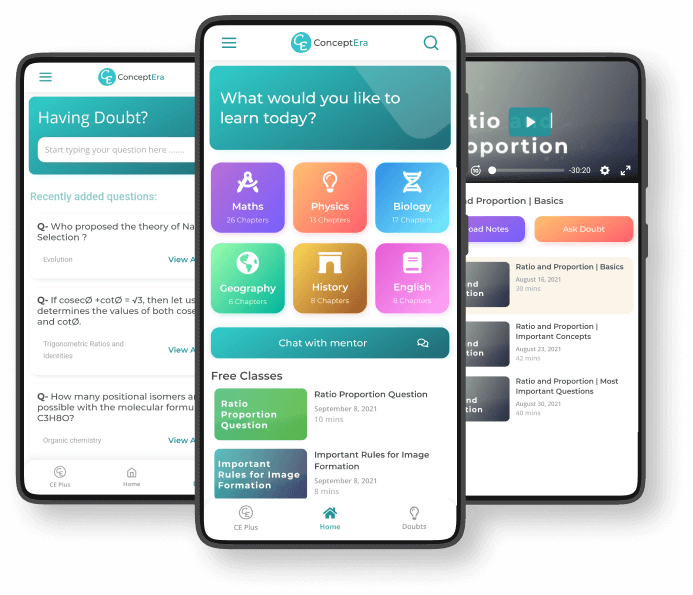Group – A
1. Write the correct answer from the given alternatives:
1.1 The process by which the height of the earth surface increases is:
(a) Agradation (Ans)
(b) degradation
(c) weathering
(d) Denudation
1.2 Deep cracks on the surface of the mountain glacier are called:
(a) Nunatak
(b) Crevasse (Ans)
(c) Arete
(d) Cirque
1.3 Annual range of temperature remains minimum in:
(a) Equatorial climatic region (Ans)
(b) Monsoon climatic region
(c) Mediterranean climatic region
(d) Steppe climatic region
1.4 Cold local wind that blows in the Rhone valley of France is called:
(a) Chinook
(b) Sirocco
(c) Mistral (Ans)
(d) Bora
1.5 The place, where warm and cold ocean currents converge, is called:
(a) Cold wall (Ans)
(b) Iceberg
(c) Avalanches
(d) Sargassum
1.6 When the distance between the earth and the moon is farthest, it is called:
(a) Syzygy
(b) Perigee
(c) Apogee (Ans)
(d) Aphelion
1.7 In human body contaminated water, may cause:
(a) Diarrhoea (Ans)
(b) Asthma
(c) Lung cancer
(d) Blindness
1.8 The main basis of stage reorganisation in India is:
(a) Language (Ans)
(b) Physiographic similarities
(c) Similarities in food habits
(d) Similarities in economic activities
1.9 The source of river Ganga is:
(a) Yamunotri Glacier
(b) Zemu Glacier
(c) Siachen Glacier
(d) Gangotri Glacier (Ans)
1.10 In India the largest multipurpose river valley project:
(a) Bhakra – Nangal (Ans)
(b) Damodar
(c) Rihand
(d) Hirakund
1.11 The state, which ranks first in the production of rice per hectare is:
(a) West Bengal
(b) Uttar Pradesh
(c) Punjab (Ans)
(d) Andhra Pradesh
1.12 The required raw material of iron and steel industry includes:
(a) Iron ore
(b) Coal
(c) Manganese
(d) All of them (Ans)
1.13 According to 2011 census, the number of the metropolis in India is:
(a) 55
(b) 53 (Ans)
(c) 51
(d) 49
1.14 The latitudinal and longitudinal extension of million sheet topographical map is:
(a) 15’ × 15’
(b) 30’ × 30’
(c) 1° × 1°
(d) 4° × 4° (Ans)
Group – B
2.1 If the statement is true write “T’ and if false, write ‘F’ against the following (Answer any six statements):
2.1.1 Altitude of snowline varies with latitudes. True
2.1.2 Wind velocity is measured with the help of Anemometer. True
2.1.3 Salinity of sea water is maximum in Equatorial region. False
2.1.4 The highest plateau of India is Deccan Trap. False
2.1.5 The old alluvial soil of Ganga plain is called Bhangar. True
2.1.6 Vishakhapattanam is the only tax – free port of India. False
2.1.7 Red coloured lines are used to show roads in satellite images. False
2.2 Fill in the blanks with suitable words (answer any six):
2.2.1 Hole formed by abrasion on river bed are called Poth holes.
2.2.2 Fog is formed by mixing of dust and fog during winter inindustrial region.
2.2.3 Labrador current causes snowfall in New Foundland.
2.2.4 Waste paper is a Recycleable type of wastes.
2.2.5 Tropical easterly Jet Stream forces Monsoon wind to blow over India.
2.2.6 The southernmost point of mainland India is Kanyakumari.
2.2.7 Mumbai is the most populous city of India.
2.3 Answer in one or two words (answer any six): –
2.3.1 Which type of rainfall is found in the Temperate zone?
Ans: Cycolnic rainfall is found in the Temperate zone.
2.3.2 Which the island of Sundarban was completely submerged due to global warming?
Ans: New Moore and Lohachara are the island of Sundarban was completely submerged due to global warming.
2.3.3 Which type of natural vegetation is found in the desert region of India?
Ans: Desert vegetation is found in the desert region of India.
2.3.4 On which quarters of the moon, does Neap tide occur?
Ans:
2.3.5 In which part of the course, river Ganga is maximum polluted?
Ans: In Delta course of Ganga is maximum polluted.
2.3.6 Name one Zaid crop of India.
Ans: Watermelon is an example of Zaid crop of India.
2.3.7 Which state of India leads in “Rain-water Harvesting”?
Ans: Tamilnaddu leads in “Rain-water Harvesting”.
2.3.8 Where is the headquarter of ‘Survey of India’ located?
Ans: In Dehardoon the headquarter of ‘Survey of India’ located.
2.4 Match the left column with the right column:
| Left Column | Right Column |
|---|---|
| 2.4.1) Prominence of ozone gas | Stratosphere |
| 2.4.2) Research institute of sugarcane | Lucknow |
| 2.4.3) Largest automobile manufacturing industrial centre | Gurgaon |
| 2.4.4) Karewa | Jammu and Kashmir |
Group – C
3. Answer the following in brief (Alternatives should be noted):
3.1 What is denudation?
Ans: Denudation involves the process of weathering, erosion and transportation together.
Or,What is “inversion of temperature”.
Ans: The condition in which the cooler air is nearer on the earth’s surface and the warmer air above on it, is called inversion of temperature.
3.2 What is Inter-tropical convergence zone?
Ans: A narrow zone near the equator where northern and southern air masses converge, typically producing low atmospheric pressure.
Or, State the definition of ocean current.
Ans: Ocean currents are regular movements of water from one part of the ocean to another.
3.3 Define waste management.
Ans: Waste management is the activities and action required manage wastes from its inception to its final disposal.
Or,What do you mean by radioactive waste?
Ans: Radioactive wastes are waste that contain radioactive material. It contains contaminated input of nuclear plant, chemical discharge etc.
3.4 Where is Malnad region located?
Ans: Malnad region is located in Karnataka of south India.
Or,Name two watershed regions of India.
Ans: Gujarat and Maharashtra are two watershed regions of India.
3.5 What do you mean by millet crops?
Ans: Millets are a group of highly variable small seeded grasses widely grown around the world. Such millets commonly grown in India are Jowar, Bajra and Ragi.
Or,Name one agro-based and one forest-based industry of India.
Ans: Sugar industry is agro-based industry and Furniture is the forest-based industry.
3.6 State the definition of satellite imagery.
Ans: Satellite images are the images of earth or other planets collected by satellites.
Or,State the use of Representative Fraction (R.F.).
Ans: This scale is the ratio of the map distance to the equivalent distance on the ground using the same unit for both.
Group-D
4. Give brief explanatory answer (Alternatives should be noted):
4.1 State three differences between “Seifdune” and “Barkhan”.
Ans: Seif dunes:-
i. They are long and narrow sand ridges lying parallel to the direction of the prevailing winds.
ii. The seif dunes rise and fall in alternate ridges and saddles in regular succession.
iii. They are found in Sahara, Iran and Thar desert.
Barkhans:-
i. They are typical crescent – shaped sand dunes, that generally develops in large numbers, when the wind is constant in a direction.
ii. The crest of barkhans moves forward when wind drives sand up the windward side. On reaching the crest the sand pile slips down the leeward side and two protruding horns are produced.
iii. They are found in deserts of Sahara, Atacama and Kalahari.
Or, Briefly explain any three factors to identify the Mediterranean climate in Temperature-Rainfall graph.
Ans: The three factors to identify the Mediterranean climate in temperature rainfall graph are:-
i. Temperature:- The highest temperature is recorded in the month of February (24°C) and lowest temperature is noticed in July (13°C).
ii. The maximum amount of rainfall occurs in June 192mm and the minimum rainfall takes place in January 7mm.
iii. Location:- the place lies in the Southern Hemisphere as it experiences summer from November to February and winter from April to July.
4.2 Briefly discuss any three effects of wastes on environment.
Ans: Three effects of waste on environment are:-
i. Waste effects the environment by causing pollution of air, water amd soil.
ii. By degrading the landscape.
iii. By affecting terrestrial and aquatic life.
Or, Briefly discuss the role of students in waste management from any three perspectives.
Ans: Role of students in waste management are:-
i. To encourage public for segregation of waste at source.
ii. They should regularly monitor waste management system in their locality and prepare reports on them.
iii. Generate awareness among the people on the need of clean environment through posters placards, road shows etc.
4.3Mention three differences about characteristics features of tropical evergreen and tropical deciduous vegetation of India.
Ans: Topical evergreen vegetation:-
i. These forest grow in areas with average annual rainfall over 200 cm.
ii. The trees are tall whise height varies from 45 to 60 metres.
iii. The trees are evergreen and form a canopy in the forest.
Tropical deciduous vegetation:-
i. These forest grow in areas recieving 100-200 cm of annual rainfall.
ii. They are 35-40 meters tall.
iii. They are called deciduous as they shed leaves during dry summer and dry winter.
Or,Explain with examples the influence of raw material the development of industries in India.
Ans: Raw materials in varied forms are fundamentally required for the initiation of any industry. The farms, mines, forests, seas etc., supply raw materials e.g. : sugarcane for sugar mills, iron-ore for iron and steel industries, timber for saw mills.
4.4Brieflydiscussaboutthreemaincharacteristicfeaturesofsatelliteimagery.
Ans: i. Satellite images are generated from line scanners and digital cameras.
ii. Basic elements of these images is a pixel.
iii. Images can be generated for any part of Electro Magnetic spectrum.
Or, Mention the merits and demerits of remote sensing.
Ans: Following are the merits of Remote Sensing:
i. Images obtained using remote sensing satellites are used as permanent records which provide useful information in various wavelengths.
ii. It can be used for large area coverage analysis and repetitive coverage analysis (e.g. water and agriculture etc.).
iii. Data acquisition at various scales and resolutions can be performed with ease which can be processed very fast using a computer in the lab.
Following are the demerits of Remote Sensing:
i. The technique is very expensive for small areas requiring one time analysis.
ii. Specific training is needed in order to analyze the image data.
iii. It is difficult to prepare large scale maps from obtained satellite data.

